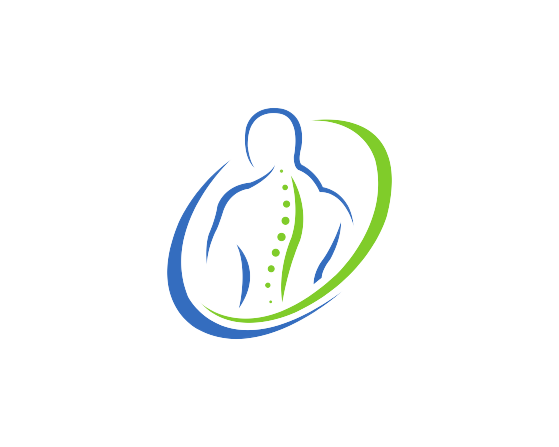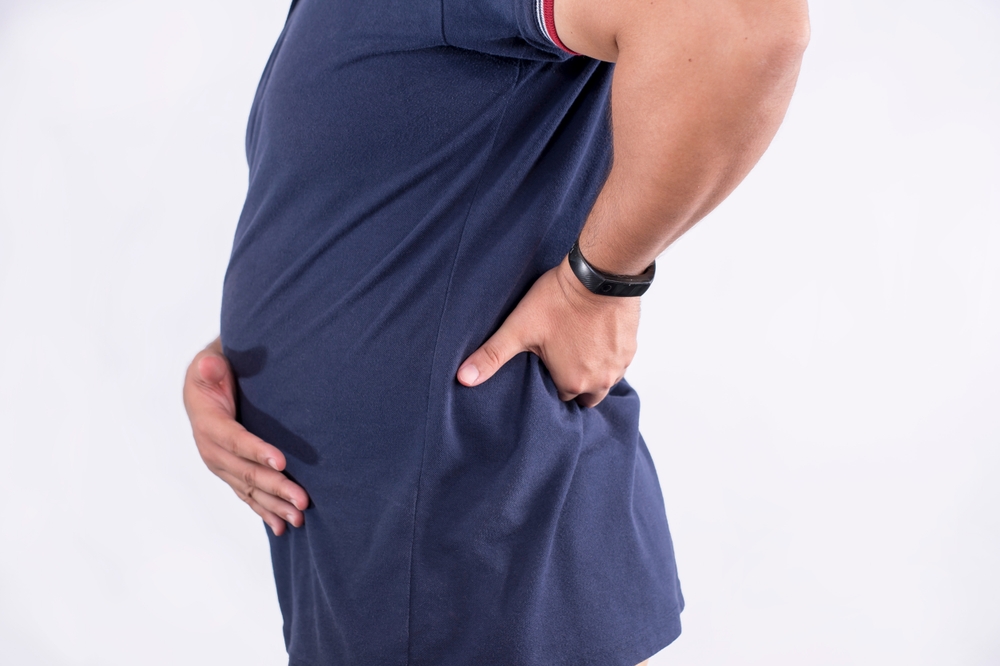Maintaining a healthy weight can help alleviate back pain by reducing the strain on the spine. Excess weight puts additional pressure on the discs in the spine, which can cause them to become damaged or worn down over time. Losing weight through a combination of diet and exercise can help reduce this strain and alleviate back pain. In addition, exercise can help strengthen the muscles in the back and improve flexibility, which can also help reduce back pain. It’s important to consult with a healthcare provider before starting any weight loss or exercise program.
Weight control techniques can play a significant role in the relief of back pain. Excess weight puts additional pressure on the spine, which can lead to damage and wear on the discs between the vertebrae. This pressure can also cause the spine to become misaligned, leading to pain and discomfort. By reducing excess weight through a combination of diet and exercise, it is possible to alleviate this pressure and improve the health of the spine.
What is the correlation between back pain and weight?
There is a strong relationship between back pain and high body mass index (BMI). Body mass index (BMI) is a measurement of body fat based on height and weight. A high BMI can indicate that a person has excess weight, which can put additional strain on the spine and lead to back pain. Studies have shown that individuals with a high BMI are more likely to experience back pain compared to those with a normal BMI.
As weight increases, so does the strain on the spine. This is particularly true in the lower back, where the majority of the body’s weight is carried. In addition to the direct impact on the spine, excess weight can also lead to other conditions that contribute to back pain, such as poor posture, muscle weakness, and reduced flexibility.
Carrying excess weight can put additional strain on the spine, particularly on the lower back, which can lead to back pain. The extra weight can also cause changes in posture, which can further contribute to back pain. Losing weight can help reduce the strain on the spine and improve back pain. It’s important to consult with a healthcare provider for guidance on a safe and effective weight loss plan. It’s also important to use good body mechanics and lift heavy objects properly to help prevent back pain.
What are the symptoms of back pain related to excess weight?
Some common symptoms of back pain that may be related to excess weight include:
- Pain that gets worse with activity or when standing for long periods
- Pain alleviated by sitting or laying down
- Difficulty standing up straight or walking for long periods
- Swelling or stiffness in the back
- Muscle spasms or cramping in the back
- Difficulty sleeping due to pain
It’s significant to remember that these symptoms are not always brought on by being overweight. If both your leg and back pain go worse with extension, your risk of developing back discomfort is higher. Exercise is made challenging by these conditions but not impossible.
What are the types of back pain related to obesity?
There are several types of back pain that can be related to obesity:
- Lumbar strain: This is a common type of back pain that is caused by overuse or injury to the muscles and ligaments in the lower back. Excess weight can aggravate it because it puts additional tension on the muscles and ligaments of the lower back.
- Herniated disc: When the cushioning between the vertebrae in the spine gets destroyed and protrudes, it puts pressure on the nerves in the spine. Excess weight raises the likelihood of suffering a herniated disc.
- Osteoarthritis: This is a kind of arthritis in which the protective cartilage on the ends of the bones breaks away, resulting in joint discomfort and stiffness. Obesity can raise the risk of osteoarthritis, especially in the spine.
- Spinal stenosis: This is a disorder in which the spinal gaps constrict, placing pressure on the spinal cord and nerves. Obesity can increase the risk of developing spinal stenosis.
It’s important to note that these are just a few examples of the types of back pain that can be related to obesity. If you are experiencing back pain, it’s important to consult with a healthcare provider for an accurate diagnosis and treatment plan.
What weight control techniques can you do to alleviate back pain?
To address these issues and alleviate back pain, it is important to implement weight control techniques that are effective and sustainable. This is usually accomplished by a mix of diet and exercise.
Diet
A healthy diet is an essential component of any weight control plan. This includes eating a variety of nutrient-dense foods in appropriate portion sizes. Some specific strategies to consider include:
- Reducing caloric intake: To reduce weight, you must generate a calorie deficit. This can be accomplished by eating fewer calories, increasing physical exercise, or both. It is necessary to note that calorie requirements differ depending on age, gender, height, weight, and activity level. A certified dietician or a healthcare physician can assist in determining an optimal calorie intake for weight loss.
- Choosing nutrient-dense foods: While it is necessary to limit calorie consumption, it is equally critical to ensure that the diet is nutrient-dense. This includes eating a variety of fruits, vegetables, complete grains, lean meats, and healthy fats. These foods are higher in nutritional density than processed, high-fat, and high-sugar meals and they can aid in weight reduction and general wellness.
- Limiting added sugars and unhealthy fats: Consuming too many added sweets and bad fats can lead to weight gain and raise the risk of chronic illnesses. To limit these types of nutrients in the diet, pick minimally processed meals and avoid added sweets and harmful fats whenever possible.
- Portion control: It is critical to pay attention to portion sizes in addition to choosing nutritious foods. This can aid in the prevention of overeating and the maintenance of a calorie deficit. Portion control may be improved by using smaller plates and bowls, measuring quantities, and employing mindful eating strategies such as slowing down and paying attention to hunger and fullness cues.
Exercise
In addition to diet, regular physical activity is an important component of any weight control plan. Exercise can help burn calories, improve muscle strength and flexibility, and promote overall health. Some specific types of exercise that may be particularly helpful for relieving back pain include:
- Cardio exercise: Walking, running, cycling, and swimming is examples of cardio workouts that can help burn calories and enhance cardiovascular health. It can also help lower the risk of obesity, diabetes, and heart disease, all of which can contribute to back discomfort.
- Strength training: Lifting weights or utilizing resistance bands, for example, can help build muscle and enhance bone density. This can help relieve back pain by reducing the tension in the spine and improving posture.
- Stretching: Yoga and Pilates, for example, can assist increase flexibility and alleviate muscular stress. This can lower the chance of muscle tension and increase general mobility, both of which can help relieve back discomfort.
- Low-impact activities: For individuals with back pain, low-impact activities may be more comfortable and easier.
In addition to diet and exercise, there are a few other strategies that may help with weight control:
- Mindful eating: Paying attention to hunger and fullness cues, as well as the sensory experience of eating, can aid in weight loss and foster more attentive and intuitive eating habits.
- Sleep: Getting enough sleep is vital for general health and may help with weight loss. Sleep deprivation has been related to a higher risk of weight gain and obesity.
- Stress management: Chronic stress can lead to weight gain and make maintaining a healthy weight more difficult. Stress management practices such as relaxation, exercise, and seeking support from friends and family can help reduce stress and enhance overall health.
- Medications: Medication may be recommended in rare circumstances to aid with weight loss or control. For maximum efficacy, they should only be used under the supervision of a healthcare practitioner and should be paired with lifestyle modifications such as diet and exercise.
Weight-Control Supplements
- Alpilean
Proudly made in the USA, Alpilean is formulated with 6 alpine nutrients that target low inner body temperature which is known to cause unexplained weight gain. By optimizing the inner body temperature, your body will stimulate a full fat-burning metabolism even when you are asleep.
- Ikaria Lean Belly Juice
Ikaria Lean Belly Juice has 8 metabolic blend of the most effective fat-burning nutrients that helps promote healthy weight loss. It is specifically developed to eliminate ceramide compounds in the body that causes fat accumulation.
- MetaboFix
MetaboFix is a red juice you can integrate with your morning routine that can reduce cravings, gives you energy for the whole day, helps you regulate your weight even without exercise and skipping meals and can also improve your mental focus and concentration.
Takeaway
Back discomfort should never become a way of life for anyone, just like sleeping and eating. Back discomfort is unquestionably a symptom that something is wrong and that your body needs assistance. You should start controlling your weight if you think weight increase is the problem. However, if you feel like you’re making every effort to lose weight, there could be an underlying issue that you aren’t properly addressing.
It is important to note that no single strategy is likely to be effective on its own, and the most successful approaches to weight control typically involve a combination of strategies. It is also important to consult with a healthcare provider before starting any weight loss or weight management program.


